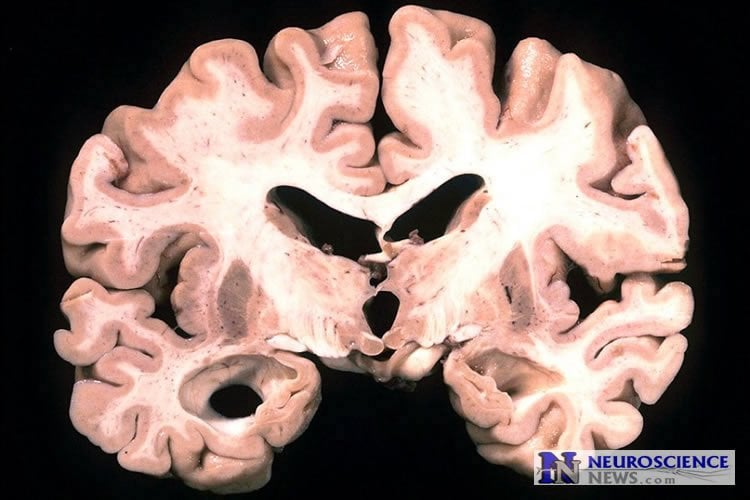Alzheimer’s disease relentlessly targets large-scale brain networks that support the formation of new memories. However, it remains a mystery as to why the disease selectively targets memory-related brain networks and how this relates to misfolded proteins seen by pathologists at autopsy. In an effort to bridge the divide between the targeted memory systems and the misfolded proteins and dying cells underneath, Mayo Clinic researchers have turned to the field of complex systems — an emerging field of science that studies how parts of systems give rise to collective behaviors and how the system interacts with its environment.
In a study of 128 participants in the Alzheimer’s Disease Neuroimaging Initiative, which is published in the February issue of the journal Brain, the team of researchers led by Mayo Clinic neurologist David Jones, M.D., proposed a disease model as a pathologic interaction within a complex system composed of large-scale brain networks and small-scale molecules. They looked into the activity of the default mode network or DMN (a brain system known for being active when we perform tasks involving memory or when invoking mental constructs), and related this activity to measures of Alzheimer’s proteins.
Building on their previous work on DMN activity, the team found that a failure that starts in this system cascades through the brain via increases in activity. These increases in activity traditionally have been understood as a compensatory process; however, this new study suggests that they also may be propagating the disease process throughout brain systems — just like rerouting of power surges can cause blackouts in a power grid.

“We found that this load-shifting process itself may be a major culprit for the development of the Alzheimer’s disease,” says Dr. Jones, the study’s lead investigator and author. “It is not unlike a cascading failure of a power grid. When a hub goes down, other areas of the network are forced to compensate. If the burden shift is too high, it blows off the circuits, and the power is down. This type of failure in our large brain networks may be responsible for the development of the Alzheimer’s disease.”
These findings, Dr. Jones believes, support a system model that would open up new avenues of preventive therapeutic interventions targeting large-scale brain activity in the years or even decades before symptoms. “This would be akin to cardiologists encouraging the lowering of blood pressure decades before plaques ever develop in the arteries in the heart,” Dr. Jones says.
Co-authors include David S. Knopman, M.D.; Jeffrey L. Gunter, Ph.D.; Jonathan Graff-Radford; Vemuri Prashanthi, Ph.D.; Bradley Boeve , M.D.; Ronald C. Petersen, M.D., Ph.D.; Clifford R. Jack, Jr., M.D. of Mayo Clinic and Michael Weiner, M.D. of University of California, San Francisco.
Source: Duska Anastasijevic – Mayo Clinic
Image Credit: The image is in the public domain
Original Research: Full open access research “Cascading network failure across the Alzheimer’s disease spectrum” by David T. Jones, David S. Knopman, Jeffrey L. Gunter, Jonathan Graff-Radford, Prashanthi Vemuri, Bradley F. Boeve, Ronald C. Petersen, Michael W. Weiner, Clifford R. Jack Jr in Brain. Published online November 19 2015 doi:10.1093/brain/awv338
Abstract
Cascading network failure across the Alzheimer’s disease spectrum
Complex biological systems are organized across various spatiotemporal scales with particular scientific disciplines dedicated to the study of each scale (e.g. genetics, molecular biology and cognitive neuroscience). When considering disease pathophysiology, one must contemplate the scale at which the disease process is being observed and how these processes impact other levels of organization. Historically Alzheimer’s disease has been viewed as a disease of abnormally aggregated proteins by pathologists and molecular biologists and a disease of clinical symptoms by neurologists and psychologists. Bridging the divide between these scales has been elusive, but the study of brain networks appears to be a pivotal inroad to accomplish this task. In this study, we were guided by an emerging systems-based conceptualization of Alzheimer’s disease and investigated changes in brain networks across the disease spectrum. The default mode network has distinct subsystems with unique functional-anatomic connectivity, cognitive associations, and responses to Alzheimer’s pathophysiology. These distinctions provide a window into the systems-level pathophysiology of Alzheimer’s disease. Using clinical phenotyping, metadata, and multimodal neuroimaging data from the Alzheimer’s Disease Neuroimaging Initiative, we characterized the pattern of default mode network subsystem connectivity changes across the entire disease spectrum (n = 128). The two main findings of this paper are (i) the posterior default mode network fails before measurable amyloid plaques and appears to initiate a connectivity cascade that continues throughout the disease spectrum; and (ii) high connectivity between the posterior default mode network and hubs of high connectivity (many located in the frontal lobe) is associated with amyloid accumulation. These findings support a system model best characterized by a cascading network failure—analogous to cascading failures seen in power grids triggered by local overloads proliferating to downstream nodes eventually leading to widespread power outages, or systems failures. The failure begins in the posterior default mode network, which then shifts processing burden to other systems containing prominent connectivity hubs. This model predicts a connectivity ‘overload’ that precedes structural and functional declines and recasts the interpretation of high connectivity from that of a positive compensatory phenomenon to that of a load-shifting process transiently serving a compensatory role. It is unknown whether this systems-level pathophysiology is the inciting event driving downstream molecular events related to synaptic activity embedded in these systems. Possible interpretations include that the molecular-level events drive the network failure, a pathological interaction between the network-level and the molecular-level, or other upstream factors are driving both.
“Cascading network failure across the Alzheimer’s disease spectrum” by David T. Jones, David S. Knopman, Jeffrey L. Gunter, Jonathan Graff-Radford, Prashanthi Vemuri, Bradley F. Boeve, Ronald C. Petersen, Michael W. Weiner, Clifford R. Jack Jr in Brain. Published online November 19 2015 doi:10.1093/brain/awv338






